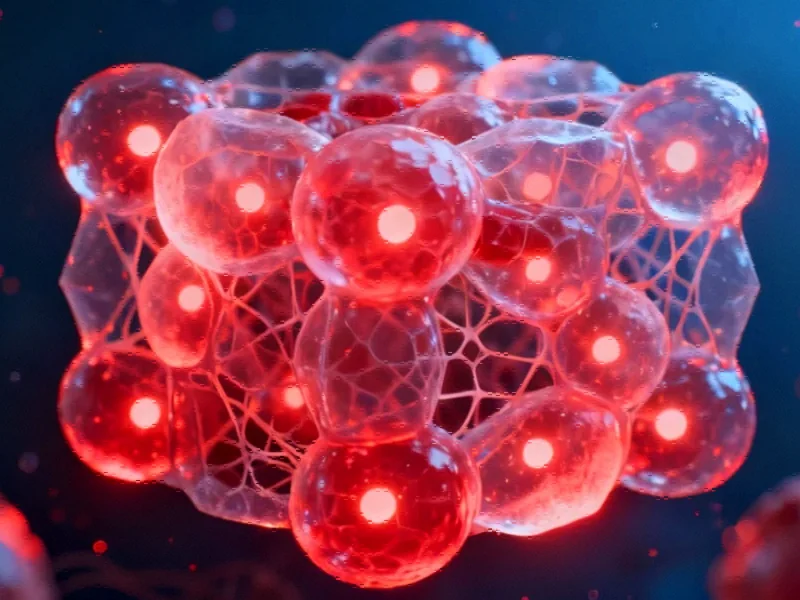Breakthrough in Synthetic Blood Production
In a revolutionary development that could transform treatment for blood disorders, researchers at the University of Cambridge have created embryo-like structures capable of producing human blood cells. These tiny ‘blood factories,’ dubbed hematoids, represent a significant leap forward in regenerative medicine and could potentially supplement traditional blood donations for patients with conditions like leukemia and lymphoma.
The hematoids, grown from donated human stem cells, mimic early embryonic development but lack critical tissues needed for full development. Unlike previous methods that required constant maintenance and growth factors, these self-sustaining structures begin producing blood cells within just two weeks of incubation in their liquid medium.
The Science Behind Hematoid Development
What makes these hematoids particularly remarkable is their ability to develop functional heart cells by day eight, which beat to circulate fluid throughout the structure. “It was an exciting moment when the blood red color appeared in the dish – it was visible even to the naked eye,” recounts University of Cambridge developmental biologist Jitesh Neupane.
The research team discovered that hematoids differentiate into both red and white blood cells with similar efficiency to umbilical cord stem cells. This breakthrough not only provides a more efficient method for generating human blood stem cells but also offers unprecedented insights into how blood forms during human embryonic development. As lab-grown embryo models continue to advance, they’re opening new possibilities for medical research.
Potential Applications and Future Implications
The implications of this technology extend far beyond supplementing blood donations. Researchers envision using hematoids to screen new drugs, study early blood and immune system development, and model blood disorders like leukemia. This approach could revolutionize how we understand and treat hematological conditions, providing researchers with unprecedented access to human blood development processes.
According to developmental biologist Azim Surani, also at the University of Cambridge, “Although it is still in the early stages, the ability to produce human blood cells in the lab marks a significant step towards future regenerative therapies – which use a patient’s own cells to repair and regenerate damaged tissues.” This aligns with broader recent technology trends where innovation is driving efficiency across multiple sectors.
Broader Context and Industry Connections
The development of hematoids occurs alongside significant industry developments in funding scientific innovation. Similarly, market trends show increasing investment in groundbreaking medical technologies. The connection between financial backing and scientific advancement has never been more apparent, with major institutions recognizing the potential of emerging biotechnologies.
Internationally, we’re seeing parallel movements toward technological sovereignty, as evidenced by related innovations in manufacturing and technology development. The hematoid breakthrough also intersects with energy storage advancements, including the battery storage revolution that could power future laboratory facilities.
Challenges and Ethical Considerations
While the potential of hematoids is immense, researchers emphasize that these structures are currently prototypes requiring further development. The technology also raises important ethical questions about synthetic embryo research that the scientific community must address thoughtfully.
The path from laboratory discovery to clinical application often involves navigating complex intellectual property landscapes, as demonstrated by industry developments in pharmaceutical patent management. Learning from such cases can help ensure that blood production technologies reach patients efficiently while respecting ethical and legal frameworks.
The Future of Blood Manufacturing
As research progresses, hematoids could eventually lead to personalized blood production using a patient’s own cells, eliminating compatibility issues and transfusion reactions. This approach represents the cutting edge of regenerative medicine, where the body’s natural processes are harnessed and enhanced in laboratory settings.
The successful creation of functional blood cells outside the human body marks a pivotal moment in medical science. While widespread clinical application may still be years away, the hematoid technology developed at Cambridge provides a promising foundation for future treatments that could save countless lives and transform how we approach blood-related disorders.
This article aggregates information from publicly available sources. All trademarks and copyrights belong to their respective owners.
Note: Featured image is for illustrative purposes only and does not represent any specific product, service, or entity mentioned in this article.



